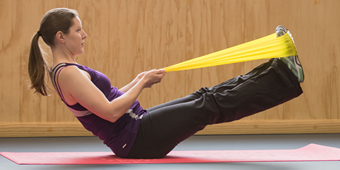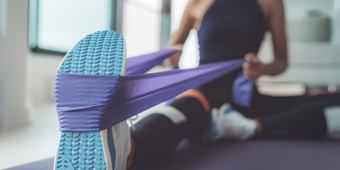No Pain, No Gain Not Accurate When It Comes to Exercise

Find Your Perfect Match
Answer a few questions and we'll provide you with a list of primary care providers that best fit your needs.
Everyone has heard the old adage “no pain, no gain.” But following this as a general rule when exercising might not be the healthiest choice.
Though muscular soreness can be healthy and an expected part of exercise, pain is not normal and should raise red flags, according to the American Physical Therapy Association (APTA).
Being able to tell the difference between regular exercise soreness and abnormal pain from exercise is important because it can help avoid injuries.
When working out, the body needs to be pushed an appropriate amount to be able to make improvements, according to the APTA. The amount to push the body is different for every person based on age, strength, past activity level, and overall health.
Keeping your exercises on the safe side of your activity threshold will lead to muscle soreness, according to the APTA. Your threshold will gradually increase as you do exercises correctly. You will have to add to your workout to continue getting results.
Pushing yourself too far, however, leads to pain from the exercise, according to the APTA.
Muscle soreness usually lasts no more than 72 hours after the activity. Though muscles might feel tight, achy, and tender to the touch, the soreness decreases over time, according to the APTA. Stretching gently also helps with the soreness.
With this kind of regular muscle discomfort, it doesn’t hurt to switch up your exercise routine to give the sore group of muscles a rest for a day or two while you focus on another part of the body, according to the APTA.
Pain on the other hand is sharp and can linger much longer without fully going away. When exercise causes pain, it can be hard to move on with any kind of workout because of how much it hurts, according to the APTA.
The problem with the idea of pushing through pain, according to the APTA, is that it can lead to serious injury. You should visit your doctor for pain that becomes extreme or lasts longer than seven to 10 days.
For more information about exercise discomfort versus pain, talk with your sports medicine or orthopedic doctor or visit our Orthopedics page to find a physician.
Find Your Perfect Match
Answer a few questions and we'll provide you with a list of primary care providers that best fit your needs.




